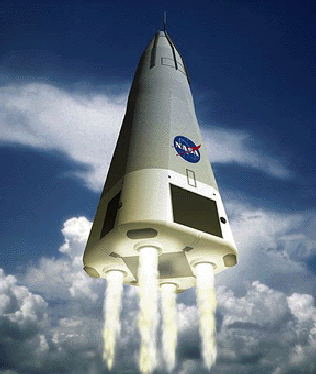
|
Credit & Copyright: NASA,
RLV Technology Program.
Explanation:
The
Delta Clipper experimental rocket or DC-X is
intended as a development vehicle to pave the way for a reusable
single stage to orbit rocket.
Shown here, in an artists conception, it has made several successful
test flights since its maiden voyage in August of 1993 -
taking off like a
rocket, hovering and moving
horizontally, and landing tail first on a designated landing pad.
The DC-X is actually too heavy and underpowered to achieve orbit,
but as part of NASA's Reusable Launch Vehicle Technology
Program, lessons learned operating the DC-X may help provide
science and industry cheaper access to space.
|
January February March April May June July August September October November December |
| |||||||||||||||||||||||||||||||||||||||||||||||||||||||
NASA Web Site Statements, Warnings, and Disclaimers
NASA Official: Jay Norris. Specific rights apply.
A service of: LHEA at NASA / GSFC
& Michigan Tech. U.
Based on Astronomy Picture
Of the Day
